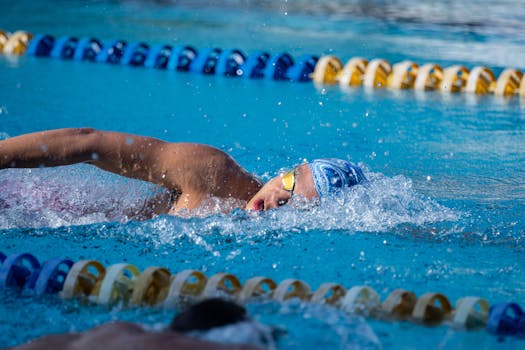Freestyle Skiing: Impressive Acrobatics and Jumps on Skis
Freestyle skiing is a thrilling winter sport that combines the grace of acrobatics with the adrenaline of skiing. It has evolved significantly since its inception, showcasing a variety of styles and techniques that captivate audiences and challenge athletes. This article delves into the world of freestyle skiing, exploring its history, techniques, and the athletes who push the boundaries of what is possible on skis.
The Evolution of Freestyle Skiing
Freestyle skiing originated in the late 1960s and early 1970s, primarily in North America. It began as a way for skiers to express themselves on the slopes, incorporating elements of ballet, gymnastics, and even surfing. The sport gained popularity rapidly, leading to the establishment of competitions and the formation of freestyle skiing as a recognized discipline.
- 1970s: The first freestyle competitions were held, featuring events like mogul skiing and aerials.
- 1980s: The sport gained mainstream attention, with the introduction of the first World Cup events.
- 1990s: Freestyle skiing was included in the Winter Olympics, solidifying its status as a competitive sport.
- 2000s and beyond: The sport has continued to evolve, with new disciplines such as slopestyle and halfpipe gaining prominence.
Key Disciplines in Freestyle Skiing
Freestyle skiing encompasses several distinct disciplines, each with its own unique challenges and techniques. The main categories include:
- Mogul Skiing: Athletes navigate a course of bumps and jumps, performing tricks while maintaining speed and control.
- Aerials: Skiers launch off large jumps, executing flips and spins before landing on a slope below.
- Slopestyle: This discipline involves a course with various obstacles, including rails and jumps, where skiers perform tricks and stunts.
- Halfpipe: Athletes ski in a U-shaped structure, performing aerial tricks as they transition from one side to the other.
The Techniques Behind the Tricks
Freestyle skiing is not just about speed; it requires a high level of skill and technique. Here are some essential techniques that athletes master:
- Takeoff: The ability to launch off jumps with precision is crucial. Athletes must time their takeoff perfectly to achieve the desired height and rotation.
- Rotation: Skiers perform various spins and flips, requiring a strong core and balance to maintain control in the air.
- Landing: A successful landing is vital for scoring points. Athletes must absorb the impact and maintain their speed to continue down the course.
Notable Athletes in Freestyle Skiing
Throughout the years, several athletes have made significant contributions to the sport, pushing the limits of what is possible. Some notable figures include:
- Jonny Moseley: A pioneer in freestyle skiing, Moseley won a gold medal in mogul skiing at the 1998 Winter Olympics and is known for his innovative tricks.
- Sarah Burke: A trailblazer for women in freestyle skiing, Burke was instrumental in the inclusion of women’s halfpipe in the Olympics.
- David Wise: A two-time Olympic gold medalist in halfpipe, Wise is known for his technical skills and creativity on the slopes.
The Future of Freestyle Skiing
As freestyle skiing continues to grow in popularity, the future looks bright for the sport. With advancements in technology, training methods, and increased visibility through social media and competitions, more athletes are entering the field. The inclusion of freestyle skiing in major events like the Winter Olympics ensures that it will remain a prominent part of winter sports culture.
Conclusion
Freestyle skiing is a dynamic and exhilarating sport that showcases the incredible acrobatics and jumps that athletes can achieve on skis. From its humble beginnings to its current status as an Olympic discipline, freestyle skiing has captivated audiences worldwide. As athletes continue to innovate and push the boundaries of what is possible, the sport will undoubtedly evolve, inspiring future generations to take to the slopes and embrace the thrill of freestyle skiing.
